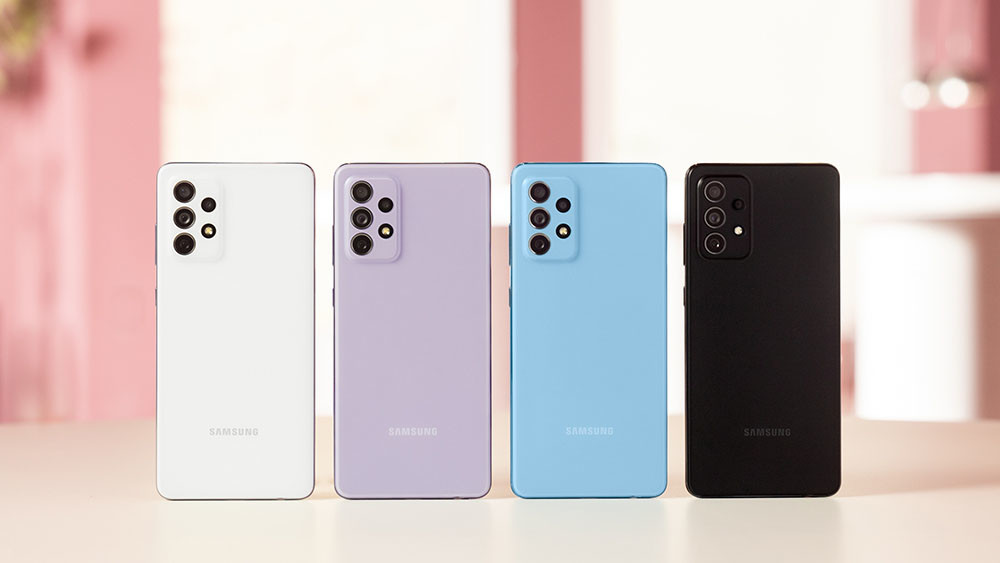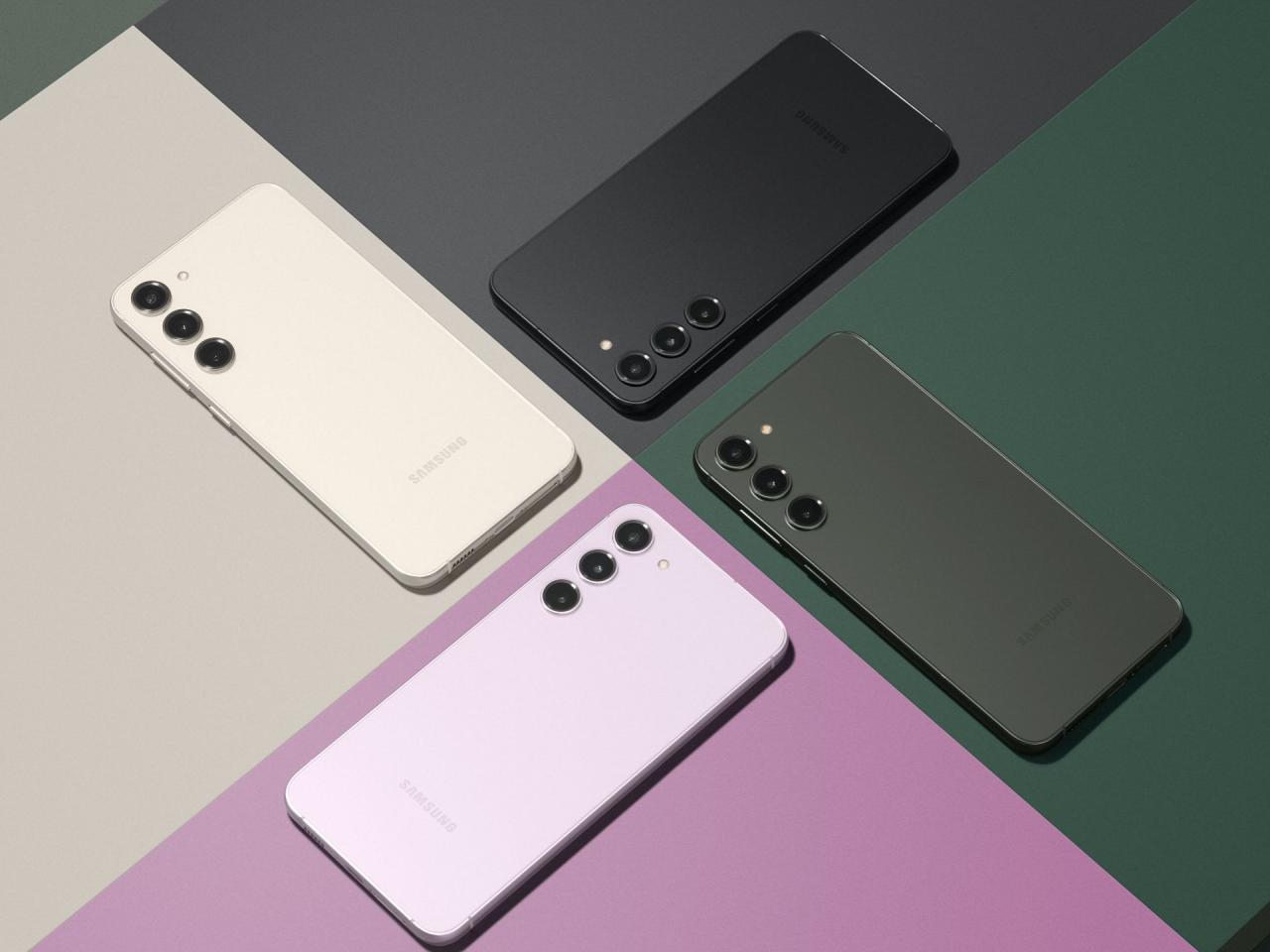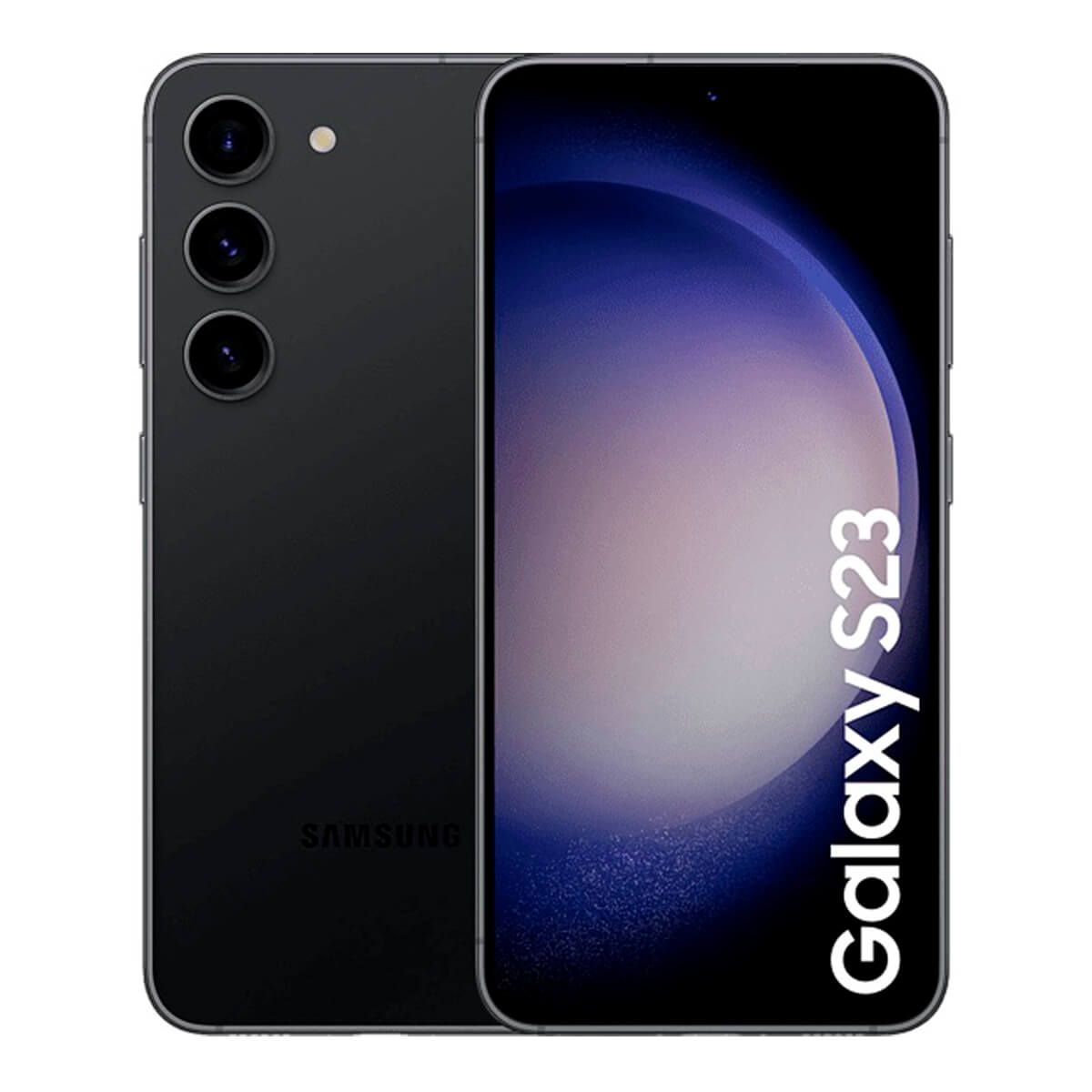samsung galaxy s ii takes center stage as a landmark device in the evolution of smartphones, captivating users with its cutting-edge technology and design. Released in 2011, it marked a significant leap forward for the Galaxy series, boasting features such as a dual-core processor and a stunning Super AMOLED display. Targeted at tech-savvy consumers, the Galaxy S II not only set a new standard for performance but also played a pivotal role in shaping the smartphone market and influencing future designs.
This smartphone was not just about hardware; it introduced a user-friendly interface and a suite of software enhancements that made it appealing to both casual and power users. As we delve deeper into its specifications, user experiences, and market impact, the legacy of the samsung galaxy s ii continues to resonate in today’s tech landscape.
Overview of Samsung Galaxy S II

The Samsung Galaxy S II, launched in April 2011, marked a pivotal moment in the smartphone arena. With its sleek design and robust performance, it became an instant favorite among tech enthusiasts and everyday users alike. The device was heralded for its impressive Super AMOLED Plus display, rapid processor speeds, and an array of multimedia capabilities, setting it apart from competitors in the market.
The evolution of the Galaxy series leading to the S II showcases Samsung’s commitment to innovation. The original Galaxy S laid the groundwork with its Android operating system and touch interface. The S II built upon this foundation, introducing significant advancements such as a dual-core processor, which was revolutionary at the time, and a thinner, lighter design that enhanced user comfort. Each iteration of the Galaxy series has pushed boundaries, incorporating better technology and user-focused features, culminating in the S II’s successful release.
Target Market and Significance
The Samsung Galaxy S II was primarily targeted at tech-savvy consumers looking for a powerful smartphone that did not compromise on style. It appealed to a diverse demographic, from young professionals to students, all seeking the latest technology for personal and professional use.
The significance of the Galaxy S II in the smartphone industry cannot be overstated. It helped Samsung solidify its position as a leader in the smartphone market, showcasing their ability to compete with established brands like Apple. The S II’s success not only boosted Samsung’s sales but also set a new standard for Android devices, influencing future smartphone designs and functionalities.
Key features that contributed to its success included:
- 4.3-inch Super AMOLED Plus display for vibrant colors and deeper blacks.
- 1.2 GHz dual-core processor for fast performance and multitasking capabilities.
- 8 MP rear camera with 1080p video recording for high-quality photography and videography.
- Lightweight design at just 116 grams, making it easy to carry and use.
- Android Gingerbread with an upgrade path to Ice Cream Sandwich, keeping users up-to-date with software advancements.
The Galaxy S II laid the groundwork for subsequent models in the series, establishing a legacy that has led to the development of the current Galaxy flagship devices. Its impact is reflected in the way it shaped consumer expectations for smartphones, merging powerful performance with elegant design.
Technical Specifications

The Samsung Galaxy S II was a flagship smartphone that showcased impressive technical specifications for its time, setting new benchmarks in the mobile industry. With a blend of advanced hardware and innovative design, it aimed to deliver superior performance and user experience.
The Galaxy S II was powered by a dual-core processor, which enabled faster processing speeds and improved multitasking capabilities compared to its predecessor, the Galaxy S. This upgrade was significant as it marked a shift towards more powerful mobile computing. The device also featured a vibrant Super AMOLED Plus display, enhancing its visual appeal through richer colors and deeper blacks.
Key Specifications
The following key specifications Artikel the impressive capabilities of the Samsung Galaxy S II:
- Processor: 1.2 GHz dual-core ARM Cortex-A9
- RAM: 1 GB
- Display: 4.3-inch Super AMOLED Plus, 480 x 800 pixels
- Storage: 16/32 GB internal storage, expandable via microSD up to 32 GB
- Camera: 8 MP rear, 2 MP front-facing
- Battery: 1650 mAh removable battery
- Operating System: Android 2.3 (Gingerbread), upgradable to 4.1 (Jelly Bean)
The advancements in specifications between the Galaxy S II and its predecessors and successors highlight the evolution of Samsung’s smartphone line. The Galaxy S II featured significant upgrades in processor speed, RAM, and display technology compared to the original Galaxy S, which had a single-core processor and a smaller screen.
Comparison with Predecessors and Successors
The following table illustrates the differences in specifications among the Galaxy S II, its predecessor (Galaxy S), and its successor (Galaxy S III), alongside other competing smartphones released during the same era:
| Model | Processor | RAM | Display | Camera | Battery |
|---|---|---|---|---|---|
| Samsung Galaxy S | 1 GHz single-core | 512 MB | 4.0-inch Super AMOLED, 480 x 800 | 5 MP rear, VGA front | 1500 mAh |
| Samsung Galaxy S II | 1.2 GHz dual-core | 1 GB | 4.3-inch Super AMOLED Plus, 480 x 800 | 8 MP rear, 2 MP front | 1650 mAh |
| Samsung Galaxy S III | 1.4 GHz quad-core | 1 GB | 4.8-inch HD Super AMOLED, 720 x 1280 | 8 MP rear, 1.9 MP front | 2100 mAh |
| HTC One X | 1.5 GHz quad-core | 1 GB | 4.7-inch Super LCD 2, 720 x 1280 | 8 MP rear, 1.3 MP front | 1800 mAh |
The technical specifications of the Galaxy S II positioned it as a competitive smartphone during its release, showcasing substantial advancements in mobile technology.
User Experience and Features

The Samsung Galaxy S II was a game-changer in the smartphone market, known for its user-friendly interface and exceptional features. The device combined powerful hardware with a smooth software experience, making it a favorite among tech enthusiasts and casual users alike.
The Galaxy S II runs on Android 2.3 (Gingerbread) and later versions, featuring Samsung’s TouchWiz user interface. This interface added a layer of customization that allowed users to personalize their devices with widgets, live wallpapers, and various themes. The menu navigation was intuitive, allowing seamless transitions between applications and settings, which contributed to an enjoyable user experience. The device’s performance was further enhanced by the inclusion of a dual-core processor, providing ample speed for multitasking and gaming.
User Testimonials on Battery Life, Camera Quality, and Performance
Many users have shared their positive experiences regarding the Galaxy S II’s battery life, camera quality, and overall performance. The device’s battery capacity of 1650mAh was praised for lasting a full day on a single charge even with heavy usage. Users reported being able to browse the web, watch videos, and utilize apps without frequently reaching for the charger.
The 8MP rear camera was highlighted for its impressive image quality, delivering vibrant colors and sharp details. Users appreciated features like autofocus and LED flash, which allowed for great low-light photography. Testimonials often included sentiments such as:
“The camera captures stunning photos even in dim lighting, making it perfect for night outings!”
Overall performance received accolades for its speed and reliability. With users reporting that the phone handled gaming, media, and productivity tasks with ease, the Galaxy S II became synonymous with performance and efficiency.
Standout features that propelled the Galaxy S II into the limelight include:
- Lightweight and slim design, making it comfortable to hold and carry
- 4.3-inch Super AMOLED Plus display for vibrant colors and deep blacks
- Dual-core processor for enhanced multitasking and gaming performance
- 8MP rear camera with advanced features for high-quality photography
- Expandable storage via microSD card, providing flexibility in storage options
- Support for HD video recording at 1080p resolution
- Strong battery life, ensuring long hours of usage
- Robust app ecosystem available through the Google Play Store
- Samsung’s TouchWiz UI, offering user-friendly customization options
Impact on the Smartphone Market
The Samsung Galaxy S II significantly influenced the smartphone market by setting new standards in design, performance, and user experience. Launched in 2011, it was a pivotal device that not only contributed to Samsung’s rise in the mobile sector but also inspired future smartphone innovations across various brands.
The Galaxy S II’s impact can be seen in its sleek design, powerful hardware, and rich feature set, which became benchmarks for subsequent models. Its introduction of an ultra-thin profile and AMOLED displays set a precedent that many manufacturers sought to emulate, pushing the entire industry towards more refined aesthetics and improved display technologies.
Influence on Smartphone Designs and Technologies
The Samsung Galaxy S II introduced several features and design elements that have since become industry standards. The emphasis on lightweight construction combined with a large, vibrant display redefined what consumers expected from smartphones. Key technological advancements included:
- Super AMOLED Display: The Galaxy S II was one of the first devices to feature a Super AMOLED Plus display, which offered richer colors and deeper blacks compared to LCD screens. This technology has influenced countless devices since.
- Dual-core Processor: With a dual-core processor, the Galaxy S II facilitated faster multitasking and improved performance for demanding applications, establishing a trend for higher processing capabilities in future smartphones.
- Thin and Light Design: The sleek profile of the Galaxy S II inspired manufacturers to prioritize lightweight materials and compact designs, leading to the modern smartphone aesthetic that we recognize today.
Marketing Strategies and Effectiveness
Samsung employed innovative marketing strategies to promote the Galaxy S II, which played a crucial role in its success. The campaign focused on highlighting the device’s cutting-edge features and its competitive edge over rival smartphones. Effective strategies included:
- Targeted Advertising: Samsung created targeted advertisements showcasing the Galaxy S II’s superior features, such as its camera quality and display technology, appealing to tech-savvy consumers.
- Celebrity Endorsements: Partnerships with celebrities and influencers helped to enhance brand visibility and credibility, making the Galaxy S II a desirable choice among consumers.
- Social Media Engagement: Samsung leveraged social media platforms to engage potential customers directly, fostering a community of users who shared their experiences and excitement about the product.
Sales Figures Comparison, Samsung galaxy s ii
The Samsung Galaxy S II achieved remarkable sales figures, establishing itself as one of the best-selling smartphones of its time. Comparing its sales with other flagship devices from 2011 provides insight into its market performance:
| Smartphone Model | Launch Year | Sales Figures (approx.) |
|---|---|---|
| Samsung Galaxy S II | 2011 | Over 28 million units |
| Apple iPhone 4S | 2011 | Over 4 million units (first weekend) |
| Nokia Lumia 800 | 2011 | Approx. 2 million units |
The Galaxy S II’s impressive sales outpaced many contemporaneous models, underscoring its impact on the market and consumer preferences. Its success laid the groundwork for Samsung’s continued dominance in the smartphone industry and influenced competitors to enhance their offerings in response.
Query Resolution: Samsung Galaxy S Ii
What was the release date of the samsung galaxy s ii?
The samsung galaxy s ii was released in April 2011.
What were the key features of the samsung galaxy s ii?
It featured a dual-core processor, Super AMOLED display, and an 8 MP camera.
How did the samsung galaxy s ii compare to its predecessor?
It offered significant upgrades in processing power and display technology compared to the original Galaxy S.
What operating system did the samsung galaxy s ii run on?
The device initially ran on Android 2.3 Gingerbread, upgradable to Android 4.1 Jelly Bean.
What impact did the samsung galaxy s ii have on smartphone design?
It influenced future smartphone designs with its emphasis on sleek aesthetics and high-performance components.
The Samsung S9 Plus stands out with its sleek design and powerful camera capabilities, making it a favorite among tech enthusiasts. Its stunning display and performance are perfect for both casual users and mobile gamers alike, ensuring a smooth experience. If you’re considering upgrading, this model offers a blend of innovation and style that is hard to resist.
When looking back at iconic devices, the Galaxy S6 is often remembered for its groundbreaking design and premium build quality. Despite being older, it still holds a special place in the hearts of many users due to its vibrant display and solid performance, proving that some classics never go out of style.